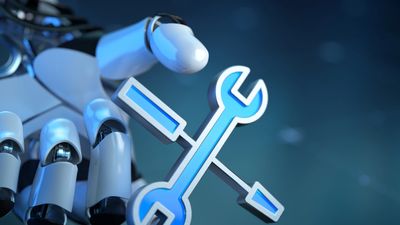AI Tool Standardization Strategy
by Galaxy Advisors
A consulting strategy for standardizing around a pallet of AI tools for organizational adoption should focus on balancing business needs, scalability, governance, and technical excellence. Here is a structured offering based on best practices:
AI Tool Standardization Strategy Consulting: Enterprise Adoption
1. Organizational Alignment and Requirements Gathering
- Facilitate cross-departmental workshops to assess business objectives and technical needs; identify critical workflows benefiting from AI standardization.
- Engage stakeholders to clarify regulatory, compliance, and security requirements specific to each business function.
2. AI Tool Selection and Pattern Library Development
- Evaluate available AI tools (open source, commercial, cloud-native) and score them against standardized requirements: scalability, cost, integration, explainability, compliance, and ease of use.
- Develop and document a “pattern library”—a curated suite of pre-approved, reusable AI models, code templates, and architecture diagrams—to accelerate adoption and reduce duplicated work.
- Implement a centralized platform or repository for tool access, documentation, updates, and support resources.
3. Governance, Security, and Compliance
- Establish an AI Center of Excellence and a model governance committee to oversee tool selection, procurement, and usage; set up evaluation criteria for tools and models (performance, fairness, robustness, ongoing monitoring).
- Integrate security protocols, audit trails, and compliance checks throughout the lifecycle of each tool, ensuring zero-trust principles and regulatory alignment.
- Set policies for data stewardship, model transparency, risk management, and human-in-the-loop review for high-impact AI use cases.
4. Training, Change Management, and Enterprise Access
- Roll out tailored training programs covering standardized tools, responsible AI practices, onboarding, and troubleshooting.
- Develop streamlined processes for requesting, provisioning, and tracking tool access across teams.
- Support ongoing change management and knowledge sharing, including feedback channels to iterate and expand the toolset as business needs evolve.
5. Continuous Improvement and Scaling
- Monitor tool adoption, user satisfaction, and performance outcomes; refine the toolset and usage policies based on periodic reviews and new use cases.
- Document metrics and learnings to inform future standardization and foster cross-team innovation.
This approach ensures consistency, accelerates organizational AI maturity, and empowers teams with best-in-class tools—while maintaining strong compliance, security, and business alignment. A consulting offering focused on standardizing AI tools for enterprise adoption starts with a cross-functional analysis of business needs, selection and evaluation of tools for scalability and compliance, and ends with robust governance and enterprise-wide enablement

This website uses cookies.
We use cookies to analyze website traffic and optimize your website experience. By accepting our use of cookies, your data will be aggregated with all other user data.